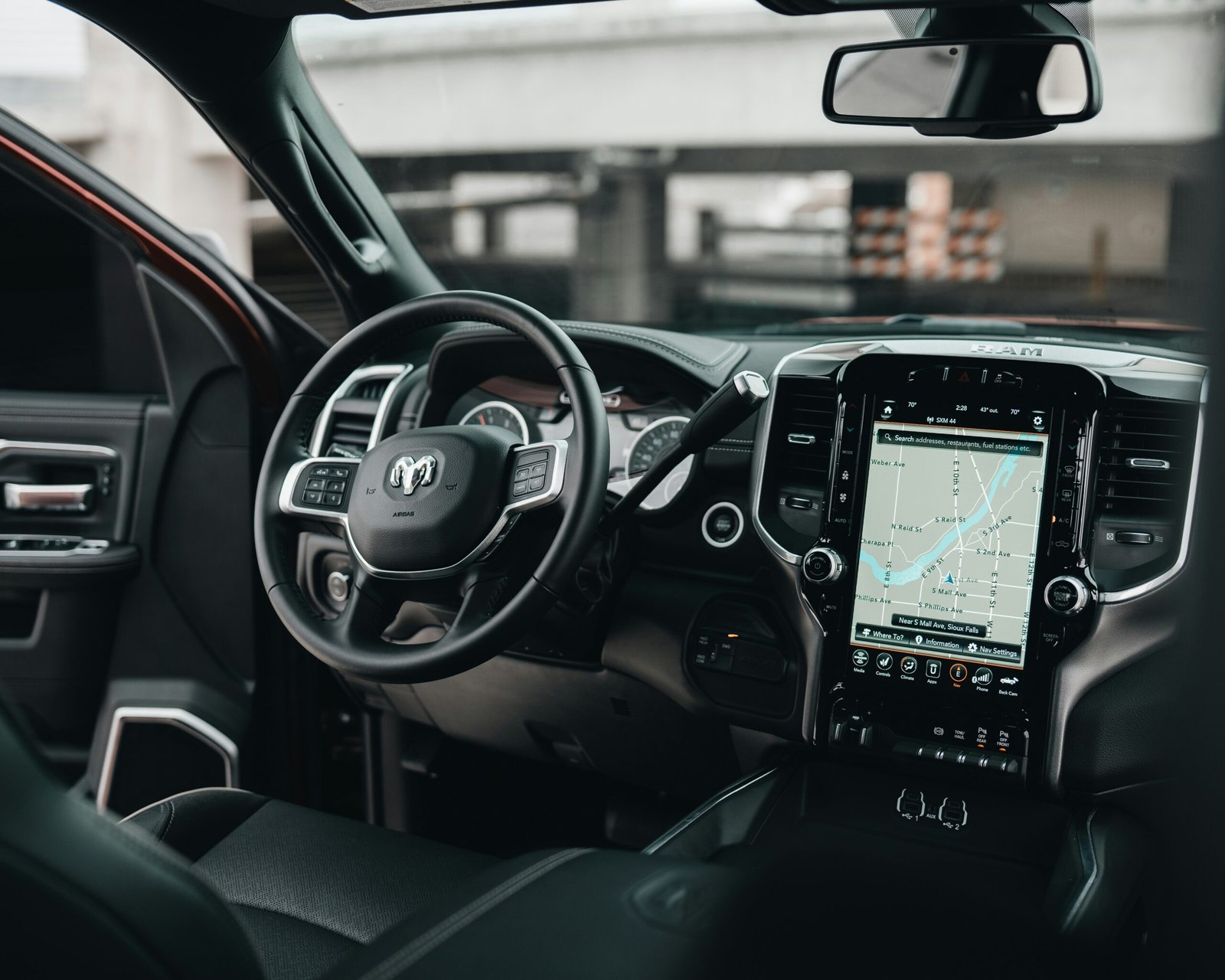Understanding Vehicle Insurance Basics
Vehicle insurance is a contractual agreement between a car owner and an insurance company, designed to provide financial protection in the event of accidents, theft, or other vehicle-related incidents. This coverage is crucial for both legal compliance and financial security, as it helps manage the financial risks associated with owning a vehicle. The functionality of insurance revolves around the payment of premiums, a fee charged by the insurance provider, which helps cover the potential costs of claims made by the policyholder.
When discussing vehicle insurance, two key terms often arise: premiums and deductibles. The premium is the amount a policyholder pays, usually monthly or annually, to maintain their coverage. On the other hand, the deductible is the sum of money the policyholder agrees to pay out-of-pocket before the insurer covers the remaining costs associated with a claim. Understanding the dynamics of these components is crucial for individuals seeking to optimize their car insurance expenses.
There are various types of coverage available, including liability insurance, collision insurance, and comprehensive coverage. Liability insurance protects against damages to another party if you are found at fault in an accident. Collision insurance, conversely, covers damages to your own vehicle resulting from an accident, while comprehensive coverage offers protection against theft, vandalism, and natural disasters. These coverage types come with varying costs and degrees of protection, which can significantly influence insurance rates.
Several factors affect the rates individuals pay for vehicle insurance, such as age, driving history, the type of vehicle, and geographical location. By comprehensively understanding these basics, individuals can make informed decisions and effectively implement insurance tips to secure potential savings and discounts. By being aware of these influential factors, policyholders are better equipped to navigate their options and possibly reduce their overall vehicle insurance expenses.
Shopping Around for Insurance Quotes
When it comes to securing affordable vehicle insurance, the process of shopping around for insurance quotes is essential. By obtaining multiple quotes from different insurance providers, consumers can gain a comprehensive understanding of the coverage options available in the market. This practice encourages a competition that can ultimately result in significant savings on car insurance premiums.
To start, it is advisable for individuals to identify at least three to five different insurance companies. This can involve both well-known national carriers and smaller regional firms that may offer competitive rates. Online comparison tools provide an efficient way to gather quotes quickly and seamlessly. These platforms typically allow users to input their vehicle information, driving history, and desired coverage levels to generate a range of estimates from various providers. Utilizing such tools can save time and help in making an informed decision.
In addition to using online resources, consulting with insurance agents can provide valuable insights into the nuances of different car insurance policies. Agents can help consumers understand the specific terms and conditions that may influence the overall cost of their insurance. They can also shed light on available discounts that may not be immediately apparent, such as multi-policy discounts, safe driver incentives, or discounts for vehicles equipped with safety devices.
When comparing quotes, it is crucial to evaluate not only the price but also the extent of coverage offered. This ensures that the selected policy meets all necessary requirements without sacrificing essential protections. By methodically comparing rates and utilizing various resources, consumers can enhance their chances of finding the best vehicle insurance deals and maximizing their savings effectively.
Leverage Discounts Offered by Insurers
One of the most effective strategies for reducing vehicle insurance premiums is to capitalize on the various discounts that insurers provide to their customers. Many insurance companies offer a range of discounts that cater to different circumstances, allowing policyholders to save significantly on their car insurance costs. The first step is to inquire about multi-policy discounts, which could offer substantial savings for customers who hold different types of insurance with the same provider. Combining vehicle insurance with homeowners or renters insurance can often lead to a reduced overall premium.
Another common discount is the safe driver discount. Insurers typically reward drivers who demonstrate responsible driving behavior by keeping a clean driving record. This means no accidents, traffic violations, or claims within a specified period. Engaging in safe driving practices not only contributes to road safety but also leads to long-term savings on car insurance. Additionally, many insurers provide discounts for vehicles equipped with safety features such as anti-lock brakes, airbags, or advanced driver-assistance systems (ADAS). These features enhance vehicle safety, and insurance companies recognize this by reducing premiums.
Furthermore, it is essential to investigate potential hidden discounts that may not be explicitly stated on an insurer’s website or promotional materials. For instance, some companies offer discounts for graduates, military service members, or members of certain organizations and associations. Engaging directly with an insurance agent and asking specific questions regarding available discounts can yield fruitful results. Taking the time to understand and effectively leverage these various discounts can lead to considerable savings on vehicle insurance, ensuring that drivers receive comprehensive coverage at a fair price.
Reviewing and Adjusting Coverage Options
In the quest for savings on vehicle insurance, one of the most effective strategies is to regularly review and adjust existing coverage options. As circumstances change, it is essential to ensure that your car insurance adequately reflects your current needs while also being cost-effective. For instance, if you own an older vehicle, the cost of comprehensive coverage may not be justified. In many cases, the market value of an older car might be significantly less than the premiums associated with full coverage. Therefore, transitioning to liability coverage alone can often lead to substantial savings on your insurance premiums.
Another common scenario involves policy add-ons that may no longer be necessary. Over time, drivers may accumulate various add-ons such as rental car reimbursement, roadside assistance, or gap insurance. While these features can be valuable under certain circumstances, they should be regularly assessed to determine their relevance. If you rarely use a rental car, for instance, removing that specific coverage could yield immediate savings. Additionally, consider whether roadside assistance is provided through other memberships or affiliations, allowing you the opportunity to eliminate that component from your vehicle insurance policy.
Furthermore, conducting a comparative analysis of different insurance providers can reveal significant discounts based on adjusted coverage options. Many companies offer competitive rates for drivers who take the time to tailor their policies to meet their specific circumstances. Re-evaluating your insurance tips and staying informed about available discounts can empower you to make well-informed decisions that align with your financial goals. By actively managing your coverage, you not only maintain adequate protection but also unlock potential savings that enhance your overall financial well-being.
Increasing Your Deductibles
One effective strategy for reducing vehicle insurance premiums is to increase the deductibles associated with your policy. A deductible is the amount you agree to pay out of pocket before your insurance begins to cover the costs of a claim. Generally, opting for a higher deductible can lead to significant savings on your car insurance premiums. Insurers often reward policyholders who are willing to take on more risk with lower premiums, as a higher deductible indicates that you are prepared to bear more of the cost in the event of an accident.
However, this approach is not without its considerations. When evaluating whether to raise your deductibles, assess your financial capability to cover the out-of-pocket expense should an incident occur. For instance, if you select a deductible of $1,000, ensure that you have sufficient savings readily available to cover this amount, as it could be quite burdensome during an unexpected financial crisis. Additionally, consider your driving habits and risk tolerance. If you have a history of safe driving and feel confident that you will not need to file frequent claims, a higher deductible may be financially sound.
To determine an appropriate deductible level, analyze your budget and insurance expenses. Many insurers provide online calculators or tools to estimate savings based on different deductible amounts. While increasing your deductible can yield substantial savings on your premiums, it is essential to strike a balance that aligns with your overall financial strategy and comfort with risk. Ultimately, a well-considered adjustment to your deductible can contribute to long-term savings in your vehicle insurance, while maintaining adequate coverage in case of unforeseen events.
Maintaining a Good Credit Score
The relationship between credit scores and insurance premiums is a significant factor in determining the cost of vehicle insurance. Insurance providers often utilize credit scores as part of their risk assessment process, with studies showing that individuals with higher credit scores typically enjoy lower car insurance rates. This connection is largely due to the correlation found between responsible credit behavior and overall reliability; insurers view customers with good credit as less likely to file claims, which influences their premium calculations.
By maintaining a healthy credit score, policyholders can effectively position themselves for substantial savings on their vehicle insurance. A strong credit rating demonstrates financial responsibility and stability, giving insurers confidence in the policyholder’s ability to manage their payments. Consequently, this often translates to invitations for discounts and more competitive rates on car insurance.
To improve or maintain a good credit score, individuals can adopt several practical strategies. First, it’s vital to pay bills on time, as punctual payments contribute significantly to credit history. Additionally, keeping the credit utilization ratio low—ideally below 30% of available credit—can also enhance one’s score. Regular monitoring of credit reports can identify any errors or inconsistencies that may negatively impact the score, and addressing these concerns promptly is crucial.
Another effective strategy is to limit the number of new credit inquiries, as excess inquiries can be viewed unfavorably. Establishing a diverse credit mix, involving various forms of credit such as credit cards and installment loans, can also further strengthen one’s credit profile. By taking these proactive steps, individuals not only improve their credit ratings but also unlock opportunities for meaningful savings on their vehicle insurance premiums, reinforcing the importance of good credit management in the context of obtaining affordable insurance options.
Utilizing Telematics and Usage-Based Insurance
The landscape of vehicle insurance is continually evolving, with telematics and usage-based insurance (UBI) emerging as prominent trends. These innovative insurance programs allow insurers to assess driving behavior through data collected via devices or mobile applications. By tracking parameters such as speed, braking patterns, and distance driven, companies can tailor premiums to reflect the real risk associated with individual drivers. Consequently, safe drivers may benefit from considerable savings on their car insurance premiums.
One of the primary advantages of telematics is the potential for discounts. Many insurers offer incentives for signing up, often resulting in immediate reductions in premiums. Those who demonstrate responsible driving habits are likely to see a more significant decrease over time. Furthermore, these programs encourage safer driving practices, as drivers become increasingly aware of their behavior behind the wheel. For many, this leads to not only financial relief but also improved road safety.
In essence, utilizing telematics and usage-based insurance can be a savvy move for conscientious drivers eager to cut costs on their vehicle insurance. By adopting this modern approach, individuals may not only unlock valuable discounts but also contribute to a broader culture of safe driving on the roads.
Taking Advantage of Bundling Policies
One effective strategy for maximizing savings on vehicle insurance is to consider bundling policies with other types of insurance, such as home or renters insurance. This option often leads to significant discounts, making it an attractive choice for many policyholders. Insurance providers frequently offer savings to customers who consolidate various types of coverage, which not only simplifies management but also results in lower overall premiums. By choosing to bundle policies, individuals may experience a reduction in their car insurance costs, ultimately enhancing their financial well-being.
In addition to the straightforward savings associated with bundling, this approach provides added convenience. It allows policyholders to handle all their insurance needs through a single provider, streamlining processes such as payments and claims. This centralization can lead to an improved customer experience, as individuals can access everything they need in one place, potentially leading to further savings in time and effort.
However, when evaluating whether to bundle vehicle insurance with other policies, it is essential to consider the specific coverage and benefits of each option. Not all bundled packages will provide the same level of savings or advantages. It is advisable to conduct a thorough comparison of multiple providers to identify the best combination that suits personal needs and circumstances. Additionally, assessing individual insurance requirements and determining whether the bundled policies adequately cover those needs is crucial. By carefully weighing these factors, consumers can make informed decisions that contribute to their overall savings on vehicle insurance and other types of policies.
Prioritizing bundling can lead to enhanced financial management and greater savings on car insurance, making it a compelling option for those looking to maximize their insurance benefits in 2024.
Regularly Reviewing Your Policy
In the realm of vehicle insurance, regular policy reviews are essential to ensure that your coverage adequately meets your present needs while maximizing savings. Over time, various life changes can significantly impact your car insurance requirements and premiums. These alterations may include relocating to a different area, acquiring a new vehicle, or even changes in personal circumstances such as marriage or a shift in your career. Each of these factors can influence the type and cost of insurance necessary to provide suitable coverage.
As a best practice, it is advisable to review your vehicle insurance policy at least once a year. This annual assessment allows you to identify any potential gaps in coverage or opportunities for discounts. For instance, if you have moved to a new location, your risk profile may change due to differences in crime rates or accident frequency in your new area. Additionally, if you have recently purchased a new vehicle, understanding its safety features and market value could afford you access to premiums that reflect these enhancements.
Another important aspect to consider during your policy review is the availability of discounts. Insurers often update their terms and conditions, which might include new discounts that could benefit you. For example, if you have maintained a safe driving record or completed a defensive driving course, you may qualify for savings not available when you first purchased your car insurance. Therefore, it is crucial to engage in open communication with your insurance provider to ensure your policy is both current and cost-effective. Such diligence will help you harness the perks of ongoing savings without encountering unnecessary liabilities.









